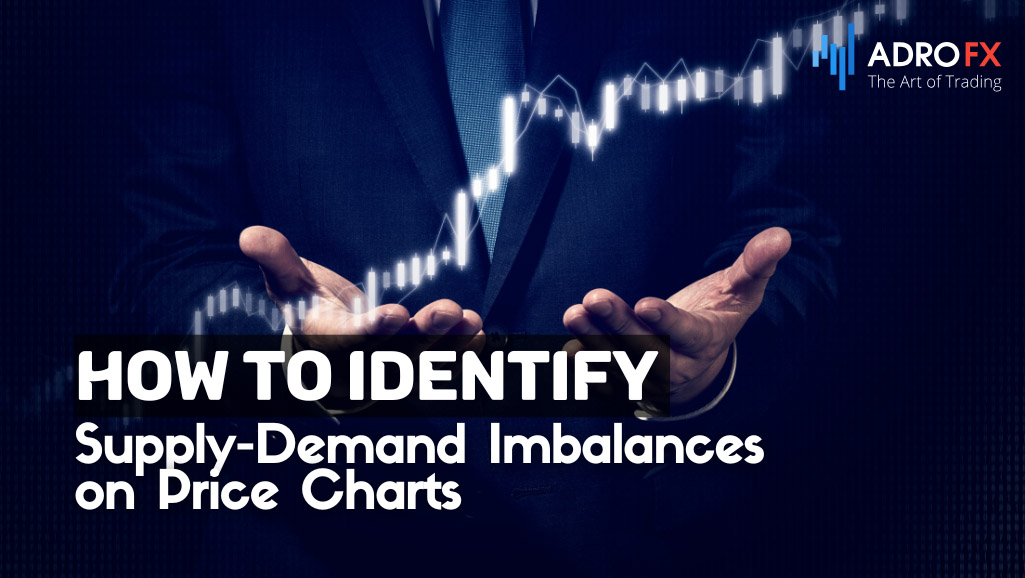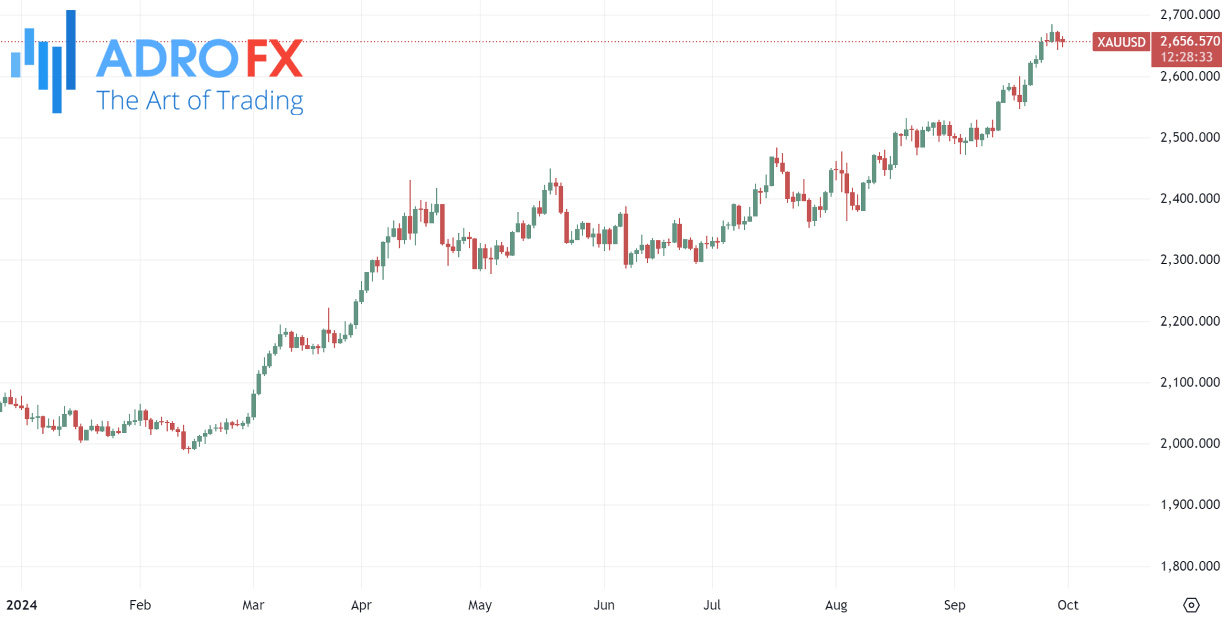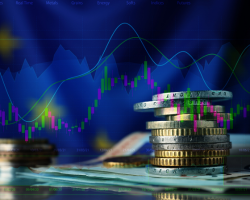Understanding Supply-Demand Imbalances: Essential Trading Strategies

What drives the price of a stock or currency up or down? In the world of trading, it's all about the delicate balance between supply and demand. Whether you're a beginner or an experienced trader, understanding supply and demand trading is crucial to making informed decisions. This concept forms the backbone of market movements, dictating how prices fluctuate in every market, from stocks to commodities to forex.
In simple terms, supply refers to how much of a particular asset is available for sale, while demand represents how much traders are willing to buy. When demand exceeds supply, prices rise. Conversely, when supply is greater than demand, prices fall. For traders, knowing how to spot these shifts can mean the difference between profit and loss. By mastering supply and demand dynamics, traders can predict price movements and execute more effective strategies.
What Is Supply-Demand Imbalance?
A supply-demand imbalance occurs when there is a disproportionate amount of buyers or sellers in the market, causing significant price movements. For example, when there are more buyers than sellers, prices increase as demand pushes the value of the asset higher. On the flip side, when sellers outweigh buyers, supply becomes abundant, leading to price declines.
In different markets, such as stocks, forex, and commodities, supply-demand imbalances are common. For instance, in the stock market, a company releasing better-than-expected earnings can create a surge in demand, pushing the stock price higher. In the forex market, political or economic news can cause currency prices to spike or fall due to sudden demand shifts. In commodities, supply chain disruptions or geopolitical tensions can lead to a shortage of resources, driving prices up.
Recognizing these imbalances allows traders to anticipate and capitalize on price action, making it a vital skill for anyone serious about market trading.
Also read: The Role of Supply and Demand in Commodity Trading
Causes of Supply-Demand Imbalance in Trading
Supply-demand imbalances in trading arise when buying and selling forces are out of sync, causing significant market movements. Several factors contribute to these imbalances, and understanding them can provide traders with the insight needed to capitalize on price shifts.
One of the most significant drivers of imbalances is economic events. Key reports like GDP growth, unemployment rates, inflation data, or interest rate decisions often trigger sharp price movements. For instance, if an unexpected rate hike is announced by the Federal Reserve, demand for the US dollar may surge, pushing the currency higher as traders scramble to buy in anticipation of future gains. Conversely, disappointing economic indicators can cause a rapid sell-off, creating an excess supply in the market and driving prices lower.
Market sentiment also plays a crucial role. Traders’ perceptions of future market movements - whether bullish or bearish - can create significant supply-demand imbalances. In bull markets, excessive optimism can cause buyers to rush in, often leading to unsustainable price increases. On the flip side, in bear markets, panic selling can result in a sudden oversupply, causing prices to plummet. Sentiment-driven trading is often self-reinforcing, where initial moves spark further buying or selling, deepening the imbalance.
Geopolitical issues are another potent factor. Events such as wars, trade disputes, or political instability can rapidly change the dynamics of supply and demand. For example, escalating tensions in the Middle East might drive up oil prices as traders fear disruptions in supply, leading to increased demand for the commodity. Similarly, political uncertainty in major economies can weaken national currencies, creating imbalances as traders seek safe-haven assets like gold or the US dollar.
Institutional traders and market makers also heavily influence supply-demand imbalances. Institutional investors - such as hedge funds or pension funds - manage large sums of money and can execute massive trades. These large orders can skew supply or demand significantly, especially in less liquid markets. When institutional players flood the market with buy or sell orders, they can shift prices dramatically. On the other hand, market makers, whose role is to provide liquidity by standing ready to buy or sell at any time, can also influence price levels. Their actions often stabilize or disrupt existing supply-demand dynamics, depending on how they balance their books.
By understanding these causes, traders can better anticipate and react to supply-demand imbalances, positioning themselves for profitable trades.

How to Identify Supply-Demand Imbalances on Price Charts
Successfully identifying supply-demand imbalances on price charts is essential for any supply-demand trading strategy. Traders who can recognize these shifts are better equipped to capitalize on market movements and enhance their profitability.
One of the most straightforward ways to spot imbalances is through technical indicators and chart patterns. Volume is often a key indicator of supply-demand shifts. For example, an unexpected surge in volume, especially during price consolidations or breakouts, often signals an imbalance. High buying volume indicates growing demand, while a spike in selling volume suggests an increase in supply. Traders use these volume trends to predict whether the market will rise or fall based on the current imbalance.
Candlestick patterns are another powerful tool. Certain formations, such as engulfing candles, pin bars, or doji candles, often indicate supply-demand reversals. For instance, a bearish engulfing pattern appearing at a resistance level may signal that sellers are overwhelming buyers, indicating that prices are likely to fall. On the other hand, a bullish engulfing pattern at a support level suggests buyers have taken control, signaling a potential price increase.
Recognizing price zones where supply or demand dominates is crucial in identifying future market movements. Supply zones typically form where prices have previously met resistance - areas where sellers have previously stepped in and pushed prices lower. These zones serve as potential entry points for traders looking to short an asset when prices revisit these levels. Demand zones form around previous support levels, where buyers have prevented prices from falling further. When prices return to these areas, traders often expect a bounce, as demand outweighs supply.
Another useful concept is price action imbalance, which is identified when price moves sharply in one direction with little to no retracement. This sharp movement often indicates a significant imbalance between buyers and sellers, offering clues about the dominant market force. When price moves quickly from a demand zone to a supply zone (or vice versa), it often leaves a gap or "void" on the chart. Traders watch these areas, anticipating that the price may retrace to fill this gap, providing an opportunity to enter the market at favorable levels.
Lastly, technical indicators like the Relative Strength Index (RSI) and Moving Averages help traders identify potential imbalances. For instance, when the RSI enters overbought or oversold territory, it suggests that the current market sentiment might be unsustainable, and an imbalance could reverse the trend. Similarly, a moving average crossover, such as the 50-day crossing above the 200-day moving average, might indicate a strong shift in demand or supply, signaling a potential trend change.
By combining these tools and understanding the nuances of price action, traders can better identify supply-demand imbalances and position themselves to profit from shifts in the market.
Also read: Insights into Leading and Lagging Technical Indicators
Impact of Supply-Demand Imbalances on Market Movements
Supply-demand imbalances are a core driver of price movement in financial markets, and they can significantly influence both short-term and long-term market trends. In the short term, these imbalances often lead to rapid price fluctuations, particularly when there is a sudden surge in demand or supply due to unexpected economic events, market sentiment shifts, or geopolitical developments. For example, if supply exceeds demand, prices tend to fall rapidly, creating bearish momentum. On the other hand, when demand overshadows supply, prices rise sharply, leading to bullish moves. Traders who understand these dynamics can position themselves to take advantage of these fast-changing conditions.
In the long term, supply-demand imbalances can establish or reinforce broader market trends. Prolonged periods of demand exceeding supply can sustain long-term uptrends in stocks, commodities, or currencies, while persistent excess supply can signal an extended downtrend. For instance, continuous economic growth in a country may drive demand for its currency or equities, creating a steady upward movement over time. Similarly, oversupply in commodity markets, such as oil, can keep prices depressed for extended periods.
One important factor tied to supply-demand imbalances is market volatility. When supply and demand are closely aligned, markets tend to be more stable with less price fluctuation. However, when there's a significant gap between the two, volatility spikes, causing prices to move unpredictably. For example, during economic crises or geopolitical conflicts, sharp supply-demand imbalances often lead to extreme price swings. Traders who anticipate these volatile periods can capitalize on the market’s heightened sensitivity but must also be prepared to manage the increased risks.
Understanding how supply-demand imbalances correlate with market trends and volatility is crucial for traders looking to navigate both short- and long-term market conditions successfully.
Trading Strategies to Profit from Supply-Demand Imbalance
To profit from supply-demand imbalances, traders employ various strategies designed to capture price movements driven by these imbalances. Two of the most common approaches are support and resistance trading and breakout trading.
Support and resistance trading involves identifying key price levels where supply or demand consistently overwhelms the other. A support level is an area on the chart where demand is strong enough to prevent the price from falling further. Conversely, a resistance level is where supply is strong enough to cap price increases. Traders often enter long positions at support levels and short positions at resistance levels, anticipating price reversals as supply or demand takes control. For example, if a stock consistently bounces off a $100 support level, traders may enter buy orders around that price, expecting the demand to drive the price higher once again.
Breakout trading focuses on taking advantage of supply-demand imbalances that cause prices to break out of established ranges. When a price breaks above a resistance level or below a support level, it often signals a new imbalance in supply and demand. In these cases, traders aim to ride the momentum created by the breakout. For instance, if a currency pair breaks above a long-standing resistance level, traders anticipate that demand will continue to push prices higher, allowing them to profit from the post-breakout rally.
Real-world examples of these strategies can be seen in commodity markets like oil, where supply disruptions can create imbalances, leading to support or resistance zones. Similarly, during earnings seasons, stocks often break out of established trading ranges based on supply-demand imbalances created by better-than-expected or disappointing results. Traders who anticipate these moves can enter positions just before the breakout or during the pullback after a breakout to maximize their profits.
Both strategies rely on the ability to correctly identify supply-demand imbalances and apply them within a broader supply-demand trading strategy.
Also read: From Theory to Practice: Implementing Effective Forex Trading Strategies
Trading Gold Supply-Demand Imbalance
Gold is often considered a safe haven asset, and understanding the supply-demand dynamics that influence its price is crucial for traders looking to capitalize on market movements. Here, we explore the specifics of how supply-demand imbalances manifest in the gold market and their implications for trading strategies.
Understanding the Gold Market Dynamics
Gold prices are driven by various factors, including economic indicators, geopolitical events, and investor sentiment. When demand for gold increases - due to factors such as market uncertainty, inflation concerns, or rising interest in gold as an investment - while supply remains static or decreases, a supply-demand imbalance occurs. Conversely, if supply increases while demand wanes, prices can decline.

TradingView, XAU/USD daily chart
The chart above illustrates recent price movements of gold (XAU/USD) over the past year. Traders can observe how sharp upward trends may signal strong demand outpacing supply, often driven by external factors such as economic downturns or increased market volatility. For instance, spikes in price following significant geopolitical events can indicate heightened demand as investors flock to the perceived safety of gold.
Identifying Supply-Demand Imbalances in Gold
To effectively trade gold based on supply-demand imbalances, traders can utilize several strategies:
- Chart Analysis
Identify historical price levels where significant reversals occurred. These levels often indicate supply or demand zones that can guide future trading decisions. For example, a consistent price zone around $2,500 may act as a strong support or resistance level, signaling potential buying or selling opportunities.
- Volume Analysis
Analyzing trading volumes alongside price movements can provide insight into the strength of supply-demand imbalances. A significant increase in volume during a price surge suggests strong buying interest, while declining volume during price drops may indicate weaker selling pressure.
- News and Economic Events
Stay informed about economic reports, interest rate decisions, and geopolitical news that can impact gold's supply and demand. For instance, announcements of central bank policies often influence gold prices, leading traders to adjust their strategies accordingly.
- Technical Indicators
Employ indicators like the Relative Strength Index (RSI) or Moving Averages to assess whether gold is overbought or oversold, indicating potential supply-demand imbalances.
By applying these strategies, traders can position themselves to profit from the fluctuations in gold prices resulting from supply-demand imbalances, ultimately enhancing their trading outcomes.
Managing Risk in Supply-Demand Imbalance Trading
Trading in markets driven by supply-demand imbalances can be highly profitable, but it also comes with increased risks due to heightened volatility. Effective risk management is essential to navigate these conditions successfully, and traders should adopt specific techniques to protect their capital.
One of the most fundamental risk management tools in imbalance trading is the use of Stop Loss orders. A Stop Loss order is placed to automatically close a trade when the market moves against the trader by a specified amount, limiting the potential loss. Given the unpredictable nature of markets affected by supply-demand imbalances, setting appropriate Stop Loss levels helps traders avoid devastating losses during periods of high volatility. For instance, a trader betting on a breakout might place a Stop Loss just below the previous resistance level, ensuring they exit the trade if the breakout fails.
Another key aspect of risk management in volatile markets is proper position sizing. Traders should never risk more than a small percentage of their capital on any single trade, especially in markets prone to sharp supply-demand imbalances. By limiting the size of each trade, they ensure that even if several trades result in losses, their overall capital remains protected. Position sizing can be determined based on the trader’s risk tolerance and the volatility of the asset. For instance, in a highly volatile commodity market, traders may opt for smaller positions to account for the increased likelihood of significant price swings.
Additionally, traders should maintain a diversified portfolio to spread risk across various assets. Supply-demand imbalances in one market, such as forex, may be offset by more stable conditions in another, such as equities or commodities. This diversification strategy helps mitigate the impact of adverse market movements caused by sudden supply-demand shifts.
In summary, employing risk management techniques like Stop Loss orders, appropriate position sizing, and portfolio diversification is critical when trading in markets affected by supply-demand imbalances. Traders who incorporate these practices are better equipped to manage the heightened risks while capitalizing on market opportunities.
Also read: Top Tools and Resources Every Forex Trader Needs for Success
Conclusion
Mastering supply-demand imbalances is a critical skill for traders who aim to succeed in today’s fast-paced and volatile markets. Understanding how supply and demand dynamics drive price action provides traders with a strong foundation for predicting market movements and making informed decisions. As discussed, imbalances between supply and demand can create opportunities for both short-term and long-term trades, and recognizing these shifts on price charts is essential for capitalizing on market volatility.
To navigate the complexities of supply-demand trading, traders must continuously learn and adapt to evolving market conditions. Factors such as economic events, geopolitical issues, and market sentiment can quickly alter the balance between supply and demand, leading to unexpected price moves. By staying informed and practicing the strategies outlined - whether it’s using support and resistance levels or capitalizing on breakouts - traders can increase their chances of success. Additionally, employing proper risk management techniques, such as Stop Loss orders and position sizing, ensures that they protect their capital in volatile market environments.
In conclusion, applying these successful trading strategies based on supply-demand imbalances requires dedication, practice, and a commitment to ongoing education. By mastering the concepts and strategies discussed in this article, traders can enhance their decision-making process and ultimately achieve greater success in the markets.
Ready to put your knowledge of supply-demand imbalances to the test? Start trading with AdroFx today! With our comprehensive trading tools, educational resources, and expert support, you can navigate the markets with confidence. Sign up for a demo account now to experience our platform and discover how AdroFx can help you achieve your trading goals!
About AdroFx
Established in 2018, AdroFx is known for its high technology and its ability to deliver high-quality brokerage services in more than 200 countries around the world. AdroFx makes every effort to keep its customers satisfied and to meet all the trading needs of any trader. With the five types of trading accounts, we have all it takes to fit any traders` needs and styles. The company provides access to 115+ trading instruments, including currencies, metals, stocks, and cryptocurrencies, which make it possible to make the most out of trading on the financial markets. Considering all the above, AdroFx is the perfect variant for anyone who doesn't settle for less than the best.










